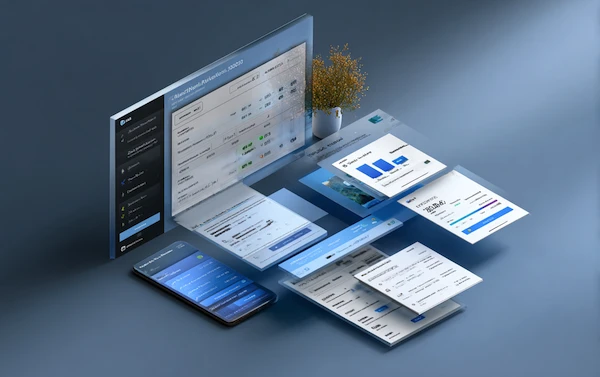Coming Up
What Is Charge Lag?
Charge lag (also called lag days, billing lag, or days to bill) is a key metric in healthcare revenue cycle management (RCM). It refers to the time elapsed between when a clinical service is delivered (i.e. the date of service) and when the corresponding charge is entered into the billing or revenue cycle system.
In simpler terms:
Charge Lag = Date of Charge Entry – Date of Service
This may be measured per encounter or aggregated across many encounters to derive average lag, percent on‑time posting, or outlier lag statistics.
Charge lag is also closely tied to charge capture (the process of recording all billable services) and charge reconciliation (matching clinical documentation to billed charges).
Why Is Charge Lag Important?
Minimizing charge lag is critical for financial health, operational efficiency, and regulatory compliance in healthcare organizations. Key reasons include:
1. Accelerated Cash Flow & Liquidity
Every day that a service isn’t charged delays billing and reimbursement. Shorter lag means claims can be submitted sooner, accelerating revenue inflow.
2. Reduced Revenue Leakage & Missed Charges
Delays increase the likelihood that some services are forgotten, documentation is lost or incomplete, or staff forget to bill certain components. These unbilled services translate into direct revenue leakage. Some estimates place revenue loss due to charge capture issues at 1–5% or more of net revenue.
3. Improved Claims Accuracy / Lower Denials
Late charge entry often correlates with errors: missing documentation, mismatched codes, incomplete fields, or payer noncompliance. These errors raise the risk of claim rejections, denials, or audit adjustments.
4. Compliance with Timely Filing Rules
Many payers impose strict timely filing deadlines—claims submitted after a window (e.g. 90 days, 180 days, etc.) may be denied outright. Charge lag eats into that window and elevates risk.
5. Better Predictability & Financial Forecasting
When lag is unpredictable or too long, revenue projections become uncertain. Leadership cannot reliably forecast collections, which complicates budgeting, staffing, and investments.
6. Operational Performance & Accountability
Charge lag serves as a diagnostic KPI. Tracking it by provider, department, procedure type, or service line helps identify bottlenecks, staff performance issues, or systemic process flaws.
What Are the Components / Sub‑lags That Contribute to Charge Lag?
Charge lag is not a monolithic delay; in practice several steps in the workflow contribute to overall lag. Understanding these helps pinpoint where to intervene. Here are common sub‑lags:
Some organizations distinguish “clinical documentation to coding” lag and “coding to billing entry” lag for deeper visibility.
Outlier charges—those with lags exceeding a threshold (e.g. > 7, > 14, > 30 days) —are especially important to monitor, as they often reflect process failures or high-risk areas.
How Is Charge Lag Measured & Reported?
To manage charge lag effectively, organizations need robust metrics and reporting. Key measurement techniques include:
Basic Metric
- Average Charge Lag (Days):
Sum of (Date of Charge Entry − Date of Service) for all encounters, divided by count of encounters. - On‑Time Posting Rate (Percentile):
Percentage of charges entered within a defined target window (e.g. ≤ 24 hours, ≤ 48 hours, ≤ 72 hours). - Late Charge Percentile / Outliers:
Fraction of charges exceeding threshold (e.g. > 7 days, > 14 days). - Department / Provider / CPT Stratification:
Analyze lag broken down by provider, clinic, CPT/procedure, payer, etc., to identify hotspots. - Trend Analysis / Lag Aging Bins:
Bucket encounters into lag bins (e.g. 0–3, 4–7, 8–15, 16–30, > 30 days) to monitor deterioration trends.
Reporting & Dashboards
Modern revenue cycle or analytics platforms (e.g. in Epic installations) often provide dashboards for:
- Average charge lag by service line or department
- Percent of charges posted on time
- Late charge volume / financial impact
- Charge reconciliation rates
- Workqueue performance to resolve lagging charges
By combining metrics with automated alerting or exception reporting, revenue cycle leaders can proactively address lag before it compounds.
What Are Common Challenges in Reducing Charge Lag?
Even with the best intentions, many organizations struggle to maintain a low charge lag. Some typical obstacles are:
1. Delayed or Incomplete Documentation
Providers may delay writing clinical notes, especially in high-volume or demanding care settings. Missing or vague documentation may hinder coding or require follow-up queries.
2. Disconnected Systems / Manual Handovers
If EHR systems, practice management tools, and billing systems are siloed or require manual data transfer, each handoff introduces delay risk.
3. Coding Backlogs & Complexity
High case volume, coding complexity (e.g. specialized procedures), and coding staff constraints slow throughput. Some specialties (e.g. radiology, cardiology, orthopaedics) tend to have more intricate coding requirements and thus higher lag risk.
4. Review / Quality Control Bottlenecks
Edits, audit queues, query resolution, or QA checks might backlog, especially when staff is limited or the process is not automated.
5. Provider Engagement & Resistance
If clinicians view charge capture as administrative burden, compliance may be weak. Delays in responding to queries or lack of awareness of revenue consequences aggravate lag.
6. Lack of Monitoring & Accountability
Without real-time metrics, alerts, or accountability frameworks, lag can drift upward unnoticed until it becomes a serious problem.
7. Timely Filing & Payer Constraints
Payers’ filing deadlines impose pressure; if lag is already large, missteps or rejection corrections may push claims past deadlines.
What Are Best Practices to Minimize Charge Lag?
To control and reduce charge lag, organizations often adopt a combination of process, technology, and governance measures. Below are proven best practices:
Real‑Time / Point-of-Care Documentation & Capture
- Encourage providers to document immediately during or right after the patient encounter, keeping memory fresh and reducing omission risk.
- Use mobile or tablet-based charge capture tools so practitioners can enter or verify charges on the spot.
Seamless Integration Across Systems
- Ensure EHR, practice management, and billing systems are tightly integrated to reduce manual data entry or handoff delays.
- Use interface monitoring so that any data transfer errors or mismatches are flagged and corrected immediately.
Establish Internal SLAs & Thresholds
- Define acceptable lag windows (e.g. ≤ 24, ≤ 48, ≤ 72 hours) and apply consistent policies across departments.
- Hold teams accountable for lag metrics; incorporate into performance reviews or operational dashboards.
Routine Charge Reconciliation & Audit
- Reconcile clinical logs, procedure logs, and departmental records against billed charges to identify missing services early.
- Flag missing or delayed encounters and resolve them proactively (ideally daily).
Automated Edits & Validation Rules
- Use system rules to run pre‑billing edits, flag missing data, logic checks, or payer compliance issues before charges are submitted.
- Automatically route problematic cases into exception or query queues rather than manual triage.
Training & Engagement for Clinical & Billing Staff
- Educate clinicians and staff on the financial impact of charge lag, emphasizing how delayed billing affects facility revenue.
- Provide performance feedback, benchmarking, and transparency.
- Involve clinicians in process design so they have ownership and less friction with charge capture workflows.
Prioritize High-Risk / High-Impact Service Areas
- Identify specialties, procedures, or service lines with historically high lag or complexity, and apply extra focus or resources there.
- Treat those “high-risk” areas as metrics pilots or process improvement targets.
Leverage Analytics & Exception Reporting
- Monitor lag metrics by department, provider, CPT, payer, and flag those exceeding thresholds.
- Use predictive modeling or alerts to catch lag trends early.
Continuous Improvement & Root Cause Analysis
- Periodically audit lag outliers (e.g. charges > 14 or > 30 days) to discover systemic causes.
- Use lean or Six Sigma approaches to redesign slow workflows.
- Iterate and adjust — reducing lag is rarely “set and forget.”
What Are Use Cases & Real‑World Examples?
Here are illustrative scenarios of how organizations manage charge lag:
- A mid‑sized hospital leverages Epic’s Charge Reconciliation Dashboard to monitor which departments fall behind on charge entry. They set threshold alerts and route lagging encounters to back office staff for resolution.
- A subset of physicians in a multi‑clinic ambulatory practice begins capturing charges at the point-of-care using tablets. Their average lag drops from ~3–5 days to under 24 hours, improving collections and cash flow.
- A health system identifies that cardiology procedures consistently exceed lag thresholds. They launched a targeted coding support team and daily reconciliation meetings for cardiology to drive lag reduction.
These examples show how combining technology, process changes, and focused interventions can produce measurable gains.
What to Look for in Tools or Software to Manage & Reduce Charge Lag
If you're evaluating software or automation to support lower charge lag, prioritize:
When selecting a system, ensure it can integrate with your existing infrastructure and is configurable to your organization’s workflows.
How Solvexia Helps with Managing Charge Lag (within a Financial Automation Framework)
At Solvexia, we specialize in enterprise-wide financial process orchestration and automation. Our platform is well equipped to help healthcare organizations embed charge-lag awareness and control into their revenue cycles. Here’s how:
- We can design data pipelines that integrate clinical, billing, and operational systems to ensure seamless flow of encounter data.
- Our workflow engines can orchestrate exceptions, alerts, and escalations (e.g. sending a charge to a special queue if lag exceeds threshold).
- Solvexia can host reconciliation routines, matching clinical service logs to billed charges, and flagging missing items for investigation.
- Our automation can drive real-time dashboards, KPI reporting, and trending for lag metrics across providers, departments, and service lines.
- We can embed rule-based checks and validations before charges are posted to reduce errors that cause rework.
- Through its process orchestration capability, Solvexia enables coordinated actions across billing, coding, QA, and operations — aligning steps to avoid bottlenecks.
- Our solution can be used to design root-cause workflows (alerts, investigations, continuous improvement loops) to drive sustainable lag reduction.
If you’d like to explore how Solvexia can apply its automation and orchestration capabilities to your revenue cycle (including charge lag management), you can learn more or request a demo to see it in action.
.svg)






























